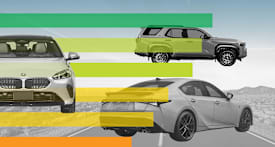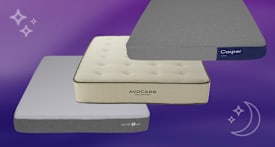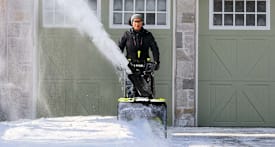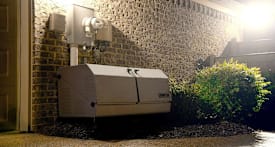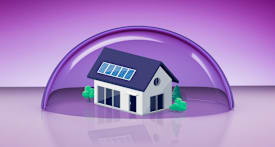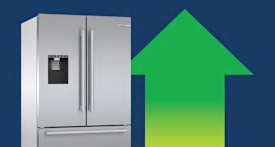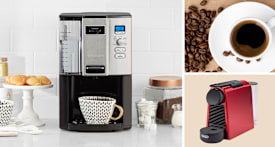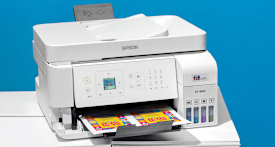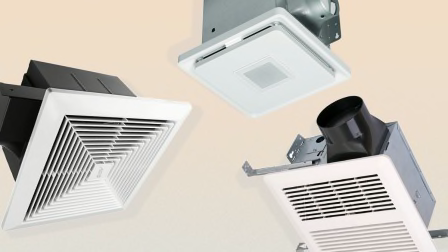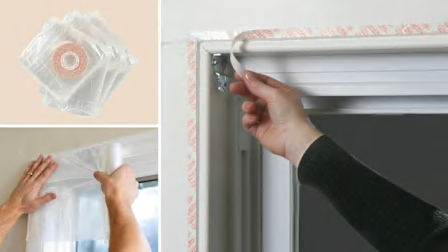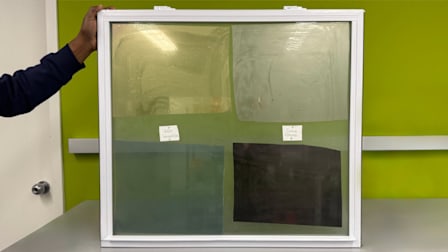How to Get Tax Credits for Home Energy and Efficiency Upgrades Before They Expire
You can earn thousands in federal tax credits for investments made in insulation, solar panels, and heat pumps, but only through the end of 2025

You have until the end of the year to take advantage of federal tax credits for clean-energy and energy-efficiency upgrades to your home, whether that’s by installing solar panels, upgrading your windows, or buying a geothermal heat pump.
Those incentives now expire at the end of 2025, due to changes made in the tax-and-spending law passed earlier this year.
You will be able to claim the credits when filing your 2025 taxes. To qualify, the expense must be incurred and the product must be placed in service by Dec. 31. For some larger projects—such as installing solar panels or upgrading your home’s heating system—it can take months to find and schedule a qualified installer and complete the work, so it’s worth getting started as soon as possible.
As before, your projects will also have to meet specific—and sometimes confusing—eligibility requirements. We’ve compiled everything you should know before embarking on a home improvement project so that you can get as much money back as possible.
How to Qualify for the Tax Credits
Two separate federal tax credits are available. Both now expire at the end of 2025.
First, the Residential Clean Energy Credit, in place since 2022, provides incentives for clean-energy investments for your home. You can subtract up to 30 percent of the cost of a new clean-energy system—such as solar panels, solar-powered water heaters, geothermal heat pumps, fuel cells, wind turbines, or battery storage technology—from your end-of-year tax bill.
You can include installation and labor costs, and this credit has no annual dollar limit for most projects.
The Energy Efficient Home Improvement Credit, in effect since 2023, rewards certain energy-efficient upgrades made to existing homes. It provides a maximum credit of $3,200 per year. That’s broken down into two parts. First, there’s a $1,200 maximum credit for the purchase of certain energy-efficient air conditioners, water heaters, and hot water boilers; insulation; exterior doors; and windows and skylights. You can also get a separate $2,000 maximum credit for the purchase of certain heat pumps, heat pump water heaters, and biomass stoves/boilers. In general, this credit is valid for the year a qualifying product is installed, not merely purchased.
Below, we cover the nuts and bolts of what’s required to receive federal tax credits, broken down by the type of product.
Air Conditioners
Heating and cooling use more energy than any other activity in your home, which is why upgrading to an energy-efficient central air conditioning system can have a substantial impact on your energy bill.
How much: 30 percent of the cost of an energy-efficient air conditioner, including installation costs, up to $600 per year.
How to qualify: The minimum efficiency to qualify depends on the kind of air conditioner you purchase. A split-system central AC must have a Seasonal Energy Efficiency Ratio (SEER2) of 17 or greater and an Energy Efficiency Rating (EER2) of 12 or greater. Packaged central air conditioners must have a SEER2 rating of 16 or greater and an EER2 of 11.5 or greater. The SEER2 and EER2 scores should be listed by the manufacturers, but you can also search in the search in the Energy Star database, which will tell you whether a model qualifies. Window AC units aren’t eligible.
Unlike some other home improvement tax credits, this one is available to renters, not just homeowners.
Biomass Stoves and Boilers (Wood-Fired Stoves and Pellet Stoves)
Pellet stoves burn compressed wood pellets rather than regular firewood, and they tend to have higher efficiency and lower emissions than traditional wood-fired stoves. But both kinds of stoves can reduce your winter heating costs and your reliance on fossil fuels.
How much: 30 percent of the cost of the biomass stove, including installation costs, up to $2,000 per year.
How to qualify: Biomass stoves (including wood-fired stoves and pellet stoves) must have an efficiency rating of 75 or higher to qualify. You can find the efficiency rating of a particular stove model through the Environmental Protection Agency database and often through the manufacturer. Renters and homeowners are eligible.
Conventional Water Heaters and Hot Water Boilers (Natural Gas, Oil, or Propane)
High-efficiency water heaters and hot water boilers that run on natural gas, propane, or oil can qualify for a federal tax credit. If you’re upgrading from an older, less efficient model, they can also trim your energy bill and shrink your home’s carbon footprint.
How much: 30 percent of the cost of the water heater or water boiler, including installation costs, up to $600.
How to qualify: Generally, eligible models must “meet or exceed the highest efficiency tier (not including any advanced tier) established by the Consortium for Energy Efficiency, which is in effect as of the beginning of the calendar year.” You can search Energy Star’s product database and check the specific requirements for natural gas water heaters and gas, oil, or propane hot water boilers. Renters and homeowners are eligible.
CR's Guide to Home Improvement
Find top-rated products and expert tips to help you save energy and money—and protect your home from extreme weather.
Electric Vehicle Chargers
While the EV tax credit has now expired, you can receive a credit for installing an EV charger in your garage through June 30, 2026. Note that the EV charger credit falls under the separate Alternative Fuel Vehicle Refueling Property Tax Credit, which means that its $1,000 annual limit is separate from the other energy-efficiency or clean-energy credits we’ve been discussing.
How much: 30 percent of the cost of the charging equipment, up to $1,000 per year for each property where equipment is installed. This credit applies to the charger itself, as well as all “components and parts essential to the operation of the charging port” and installation and construction costs.
How to qualify: The credit applies only to EV chargers installed in a primary residence, which has to be in a low-income or rural census tract. (The Department of Energy has a map showing eligible locations.) There are no limitations on the type of EV charger you install. Unsure which one to buy? Check out CR’s guide to the best EV chargers to fit your home and car.
Exterior Doors
Upgrading your home’s exterior doors can create a better seal, reducing drafts and wasted energy for heating and cooling.
How much: 30 percent of the cost of an exterior door, up to $250 per door and $500 total per year.
How to qualify: Because homes in different parts of the U.S. require varying levels of insulation, the exterior doors that qualify for the credit vary by region. To see whether a specific product is eligible for the credit where you live, first verify your climate zone on the Energy Star website. Then identify the Certified Product Directory number of the exterior door you want to purchase on the Energy Star label and look it up in the NFRC Certified Product Directory. If your climate zone has a check mark, that product is eligible for the federal tax credit where you live. Energy Star labels on exterior doors include a map that shows you whether the product qualifies for the credit in your region, but it’s a good idea to verify through the product directory. Renters can’t claim this credit.
Geothermal Heat Pumps
Geothermal heat pumps make use of the steady temperature below the surface of the earth, allowing you to efficiently heat your home in winter and cool your home in summer.
How much: 30 percent of the cost of a geothermal heat pump, including installation costs, with no annual or lifetime limit.
How to qualify: The heat pump must use the ground or groundwater as a thermal energy source or sink for your home. The product must also be Energy Star certified at the time of purchase. (You can search products in this Energy Star database.) The credit is available for existing homes, including secondary residences, and homes under construction.
Heat Pumps
Heat pumps absorb and move heat from the air, transferring it into your home in the winter and out in the summer by compressing and then expanding a refrigerant. Compared with other climate-control systems, they’re an exceptionally energy-efficient and environmentally friendly way to heat and cool your home.
How much: 30 percent of the total cost of your heat pump, including installation costs, up to $2,000 per year. This reimbursement limit for heat pumps is separate from the $1,200 limit for other energy-efficient home improvements, such as a central air conditioner system or an exterior door.
How to qualify: Since Jan. 1, 2025, heat pumps must meet Energy Star’s Most Efficient criteria for the year they’re installed. Both electric and natural gas heat pumps are eligible. (You can search in Energy Star’s product database.) Renters and homeowners can claim this credit.
Heat Pump Water Heaters
Heat pump water heaters can be as much as three times as energy-efficient as conventional models that use electrical resistance or a flame to heat your water.
How much: 30 percent of the total cost of your heat pump water heater, including installation costs, up to $2,000 per year. This limit is separate from the $1,200 limit for other energy-efficient home improvements, such as an air conditioner or exterior door.
How to qualify: Heat pump water heaters that are Energy Star certified and above 55 gallons are eligible. And both electric and natural gas heat pump water heaters are eligible. (You can search in Energy Star’s product database.) Renters and homeowners can claim this credit.
(Other types of water heaters also qualify for tax credits and are subject to their own requirements. High-efficiency water heaters that run on natural gas, oil, or propane are described above; information on solar water heaters is below.)
Home Energy Audits
A home energy audit is a professionally conducted inspection meant to identify your home’s energy-related pain points, from drafty doors to inefficient heating systems. Armed with expert advice, you can then make the most impactful changes for your home.
How much: 30 percent of the cost of the audit, up to $150 per year.
How to qualify: The inspection must be done by a qualified home energy auditor, defined as someone certified by a DOE-approved energy-efficiency program. (Look through the approved certifications.) The auditor must also write a report that identifies “significant and cost-effective energy efficiency improvements,” including an estimate of the energy and cost savings. As part of this written report, your home energy auditor should also provide you with their business employer identification number (EIN), which you’ll need when filing your taxes.
Insulation and Other Weatherization Upgrades
Adding the appropriate amount of insulation to your home is one of the most effective ways to curb your heating and cooling costs, particularly if you live somewhere with wide temperature swings. If you know your home has insufficient insulation for where you live, experts say this should be the first big energy-efficiency project you tackle because it will help you get the best value from your other upgrades.
How much: 30 percent of the total cost of home insulation, including installation costs, up to $1,200 per year.
How to qualify: Most popular insulation products, such as batts, rolls, and blow-in sprays, qualify. Air-sealing products, like weather stripping, spray foam in a can, or house wrap, can also qualify, as long as they come with a Manufacturer’s Certification Statement. This statement attests that the product qualifies for the tax credit, and it’s usually found on the manufacturer’s website.
Solar Panels
The clean-energy tax credit can reduce the steep up-front cost of installing rooftop solar panels, helping you earn back your investment more quickly. (Consumer Reports has covered the solar panel portion of the tax credit in depth.)
How much: 30 percent of the cost of a solar panel system, including installation costs, with no annual or lifetime limit.
How to qualify: The solar tax credit can be claimed by homeowners or renters installing a photovoltaic solar system on a residential home in the U.S. Landlords or property owners installing solar panels on homes they don’t currently live in aren’t eligible. The total cost can include on-site preparation, assembly, and installation costs, but it can’t include the cost of building components that serve primarily as a roofing or structural function. (Solar shingles that generate clean energy qualify, but roofing that simply supports solar panels doesn’t.)
If you received other subsidies toward your solar purchase—like rebates, public utility subsidies, or state-level incentives—it may affect the total qualified cost of your federal tax credit. Check the IRS website for more information on how to calculate your total cost.
Solar Water Heaters
These high-efficiency appliances use solar radiation to heat household water and then feed it into the home’s plumbing system. If you buy an Energy Star certified model, you might cut your cut your annual cost for hot water in half.
How much: 30 percent of the cost of a solar-powered water heater, with no annual or lifetime limit.
How to qualify: At least half of the energy generated by the water heater must come from the sun rather than an electric backup component. It also needs to be certified by the Solar Rating Certification Corporation or a comparable entity endorsed by your state. This credit applies only to water heaters that service a home, not those that heat swimming pools or hot tubs.
Windows and Skylights
As with exterior doors, well-insulating windows and skylights help create a better seal around your home.
How much: 30 percent of the cost of a window or skylight, up to $600 per year for all windows and skylights.
How to qualify: The process for finding eligible windows and skylights is the same as with exterior doors. Because homes in different parts of the U.S. require varying levels of insulation, the windows and skylights that qualify for the credit vary by region. To see whether a specific product is eligible for the credit where you live, first verify your climate zone on the Energy Star website. Then find the Certified Product Directory number of the exterior window or skylight you want to purchase on its Energy Star label and look it up in the NFRC Certified Product Directory. If your climate zone is shaded green, that product is eligible for the federal tax credit where you live. Energy Star labels on windows and skylights also include a map that shows you whether the product qualifies for the credit in your region, but it’s a good idea to verify through the product directory.

